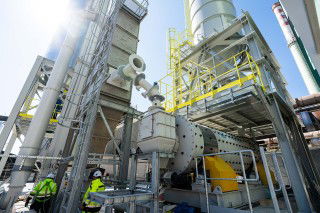At the end of last year, Cemex agreed to the sale of its Costa Rica and El Salvador operations to Guatemala's Cementos Progreso for US$335m. ICR discusses the ongoing Cemex strategy of Operation Resilience and considers how the new assets will fit in with Cementos Progreso's portfolio.
Cemex's divestment included the sale of one fully-integrated cement plant, one grinding station, seven ready-mix plants an aggregate quarry and a distribution centre in Costa Rica as well as a distribution centre in El Salvador. The cement plant sales are both in Costa Rica and include the 0.55Mta Colorado de Abangares plant in Guanacaste and the 0.25Mta grinding station at Guatuso de Patarrá, San José. Cemex invested US$35m in the Colorado de Abangares plant between 2014-17 to raise cement capacity at the plant by 0.2Mta with a new grinding mill.
Cemex increases equity with divestment
The implied valuation of the transaction is approximately US$420/t, which is much higher than CSN Cimentos' US$100/t to acquire Holcim Brazil operations and Elizabeth Cimentos for US$200/t. UBS Investment Bank has valued the Cemex's operations in the South, Central America and Caribbean region at US$225-245/t, therefore implying an significant increase on the equity of US$200-210m for this divestment.
The strategy for Cemex is a positive one, which sees the Mexican company increase its focus on major developed markets while divesting from emerging markets, in order to benefit from the the post-pandemic monetary and fiscal stimulus in countries such as the USA.
Operation Resilience is Cemex's strategy to 2023, based on enhancing margins through operational performance and disciplined cost containment. The programme will see portfolio optimisation or EBITDA growth and strategic divestments to rebalance the portfolio and bolt-on investments in core businesses. Recent investments include the Rudniki Cement plant modernisation in Poland, the waste heat recovery project at Rüdersdorf Cement in Germany, upgrades to its cement terminals in Florida, USA, and acquisition of several Spanish operations from HeidelbergCement in the autumn of 2021.
The regional expansion of Cementos Progreso
Cementos Progreso will be acquiring approximately 35 per cent of the Costa Rican cement capacity base and will be the second-largest producer in the country behind Holcim. The Guatemalan company has been gradually increasing its Central American assets, having acquired a 100 per cent stake in Cemento Interocéanico of Panama in November 2019. It also has a 48 per cent shareholding in Cementos del Norte in Honduras as well as a presence in Guatemala, Panama, Belize and the Caribbean. As recently as September 2021, the company began exporting from Guatemala to Barranquilla in Colombia.
In January 2021 the firm had a 75 per cent share of the cement market in Guatemala, due to the 3Mta it produces in the domestic market, but this total has since grown with the San Gabriel plant project, inaugurated in the municipality from San Juan Sacatepéquez, which has seen the company's domestic capacity rise to 5Mta.
"That already places us as the largest installed capacity in the region [Central America] and that gives us great enthusiasm because it will allow us to grow internationally as well," says José Raúl González, CEO of Progreso.
"We hope to have a physical presence of operations or products in an 'extended Mesoamerica' (southern Mexico and northern South America)."
Opportunities to maximise growth
Both Cemex and Cementos Progreso are looking for opportunities to invest in growth markets. For Cemex, this includes strengthening its existing presence in Europe and USA, while Cementos Progreso is looking to build its regional presence in Latin America. The Guatemalan company also has aspirations of entering the Mexican market, which is of course the powerbase of Cemex.
